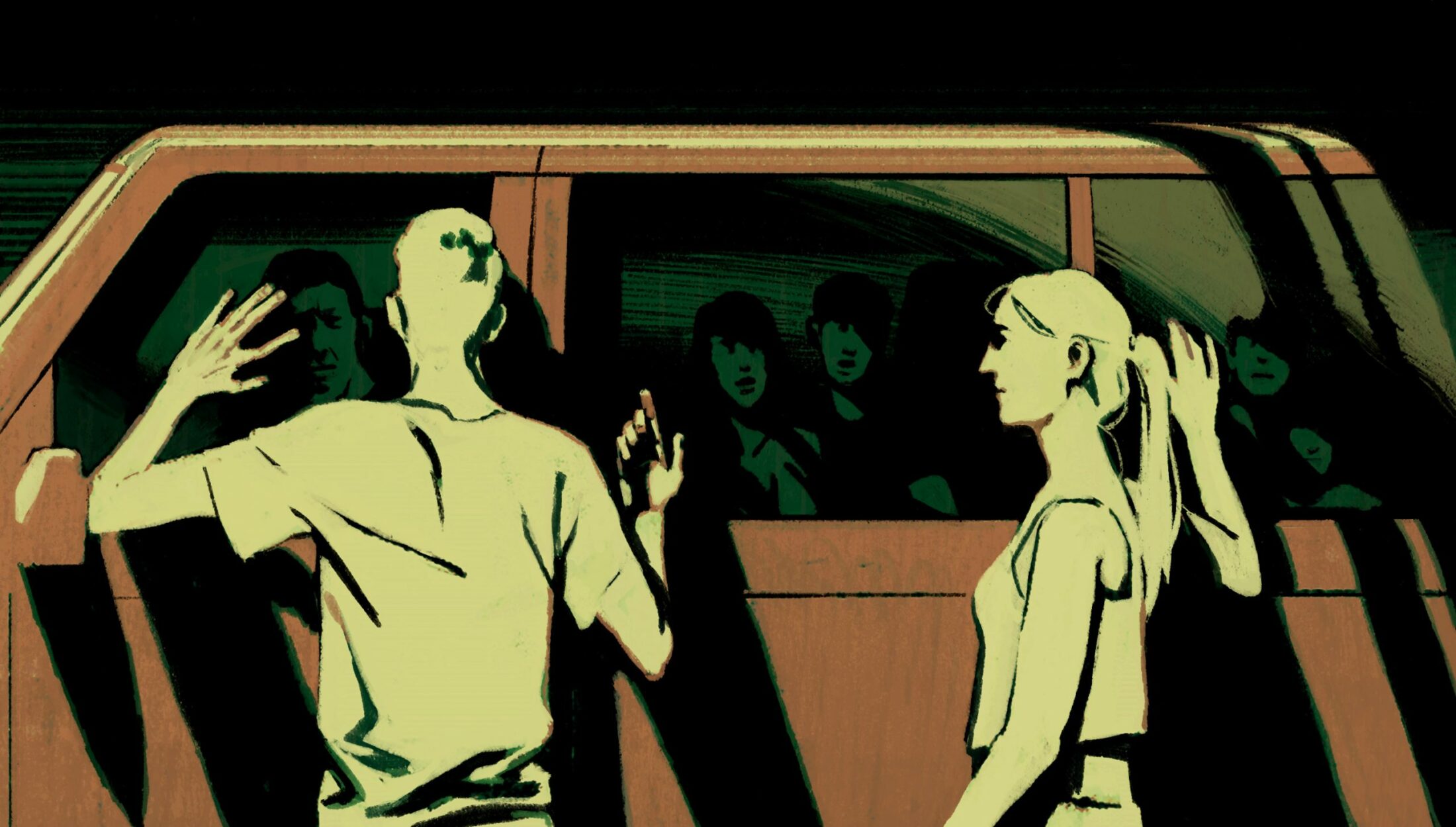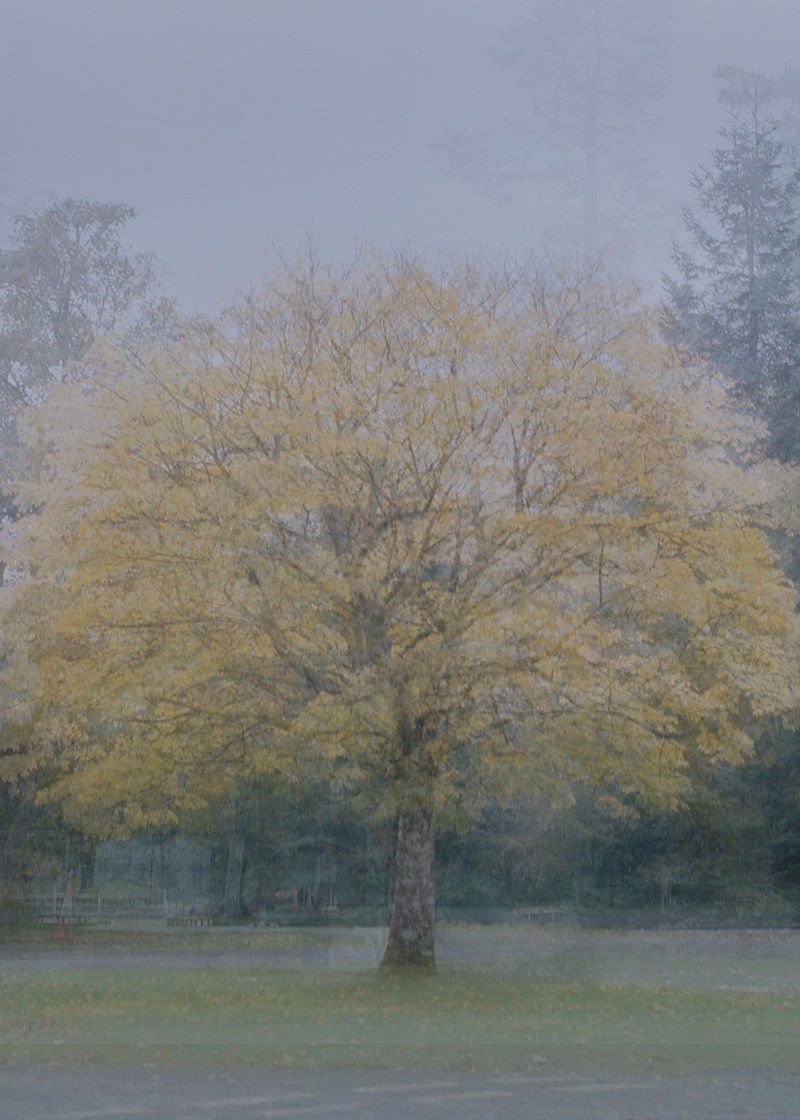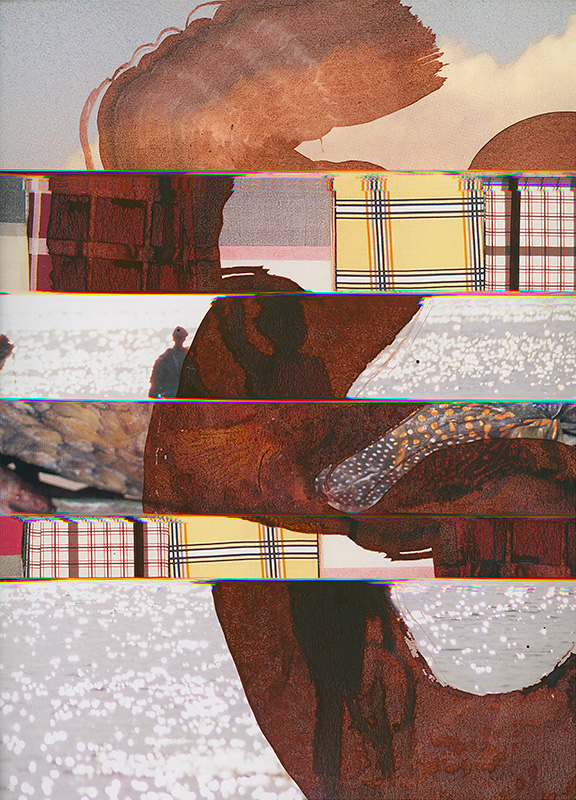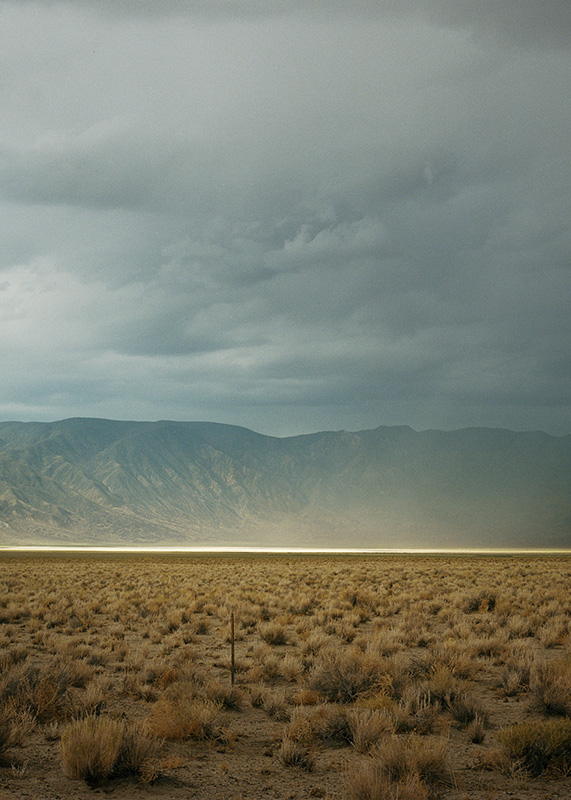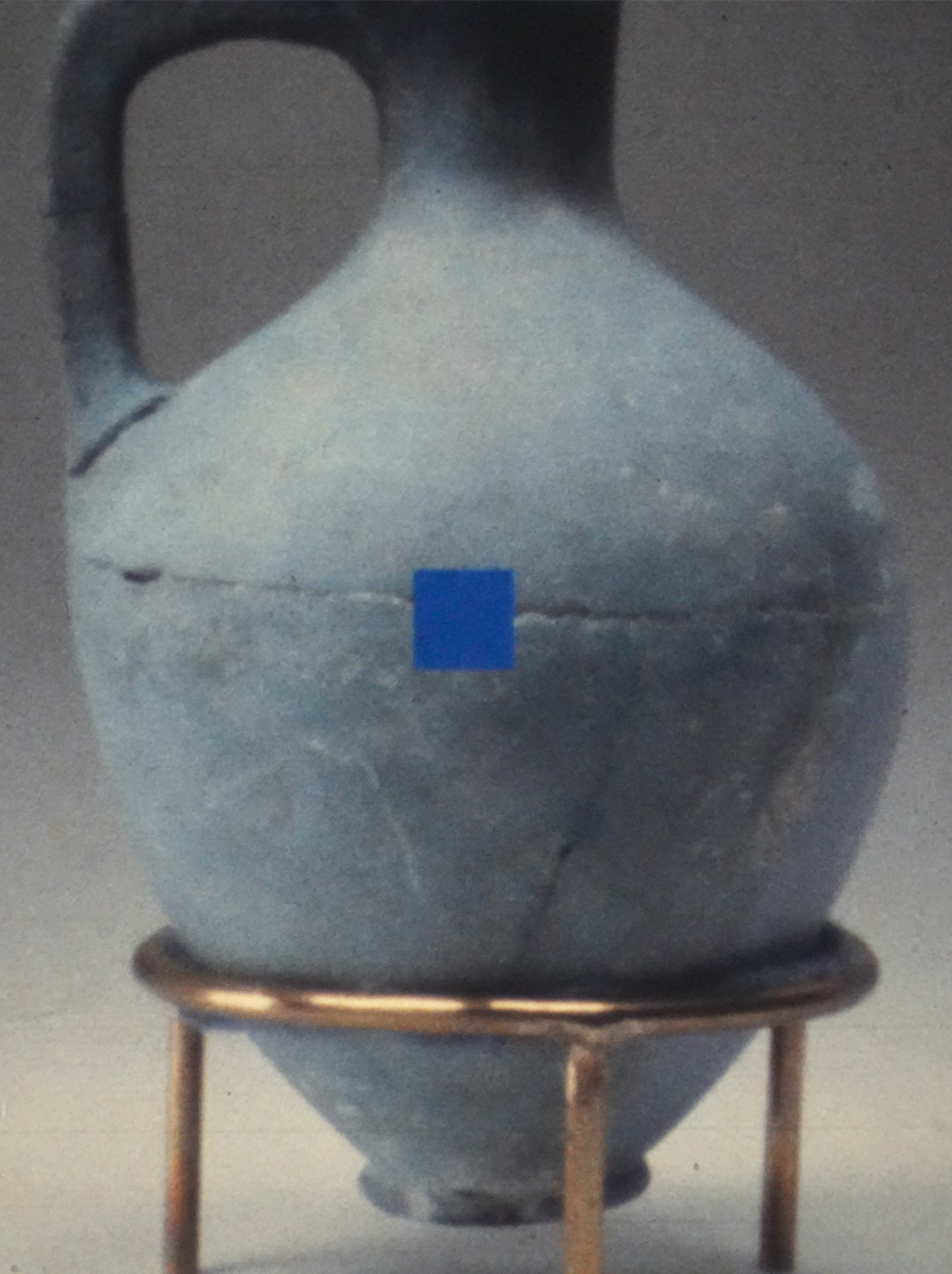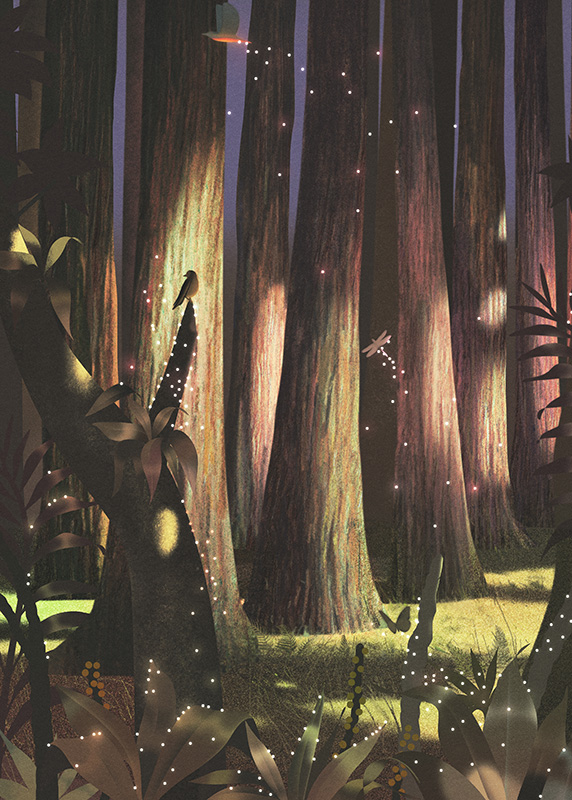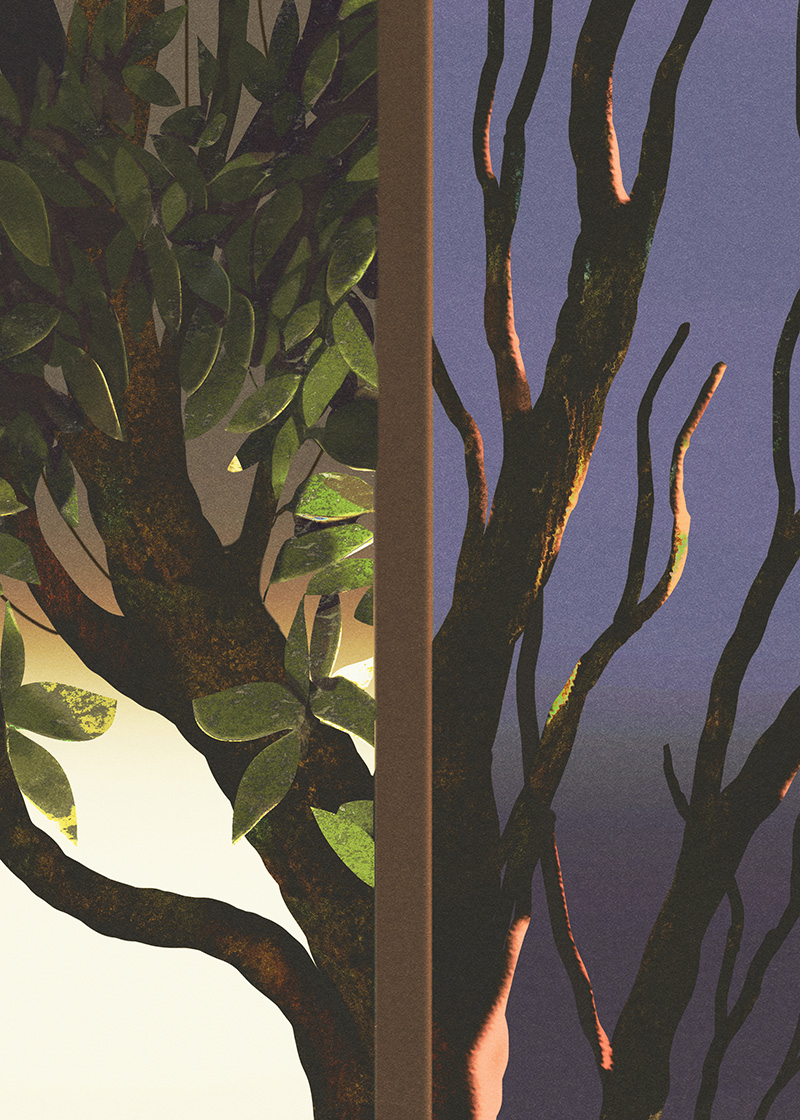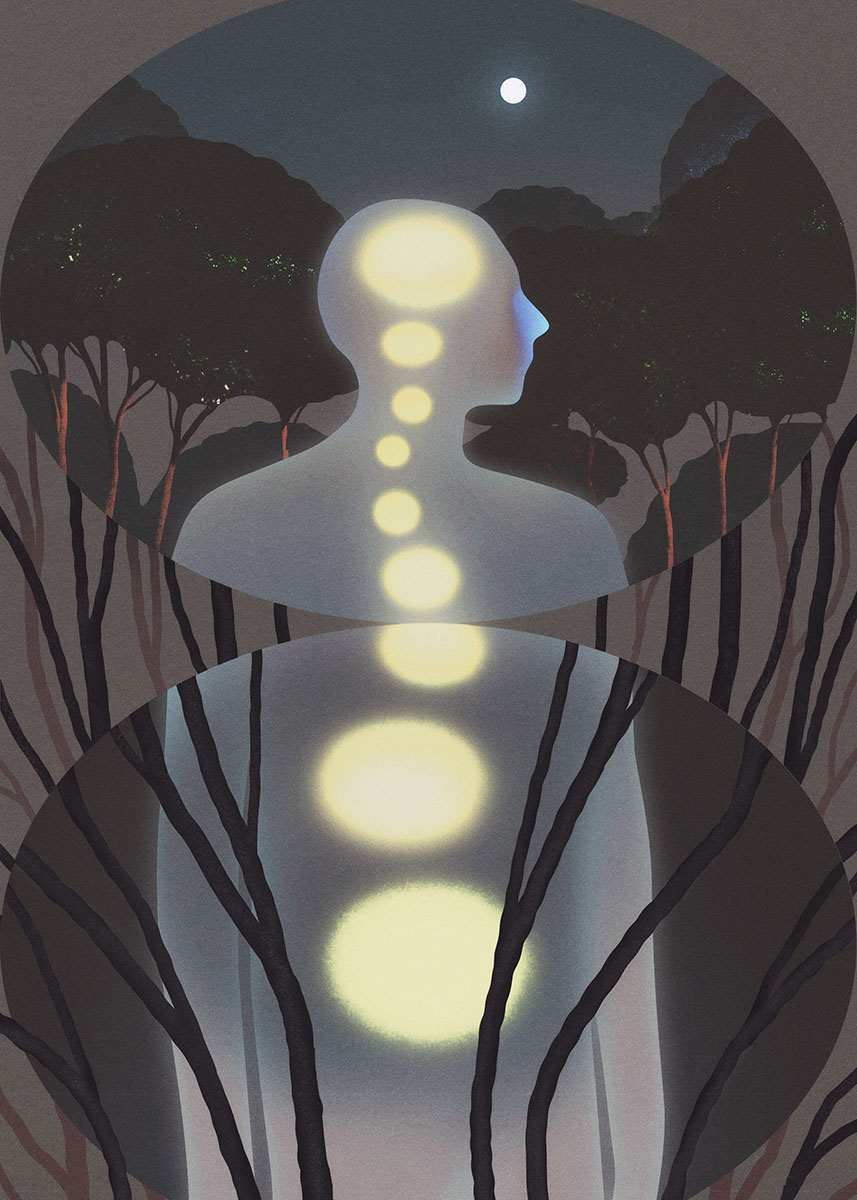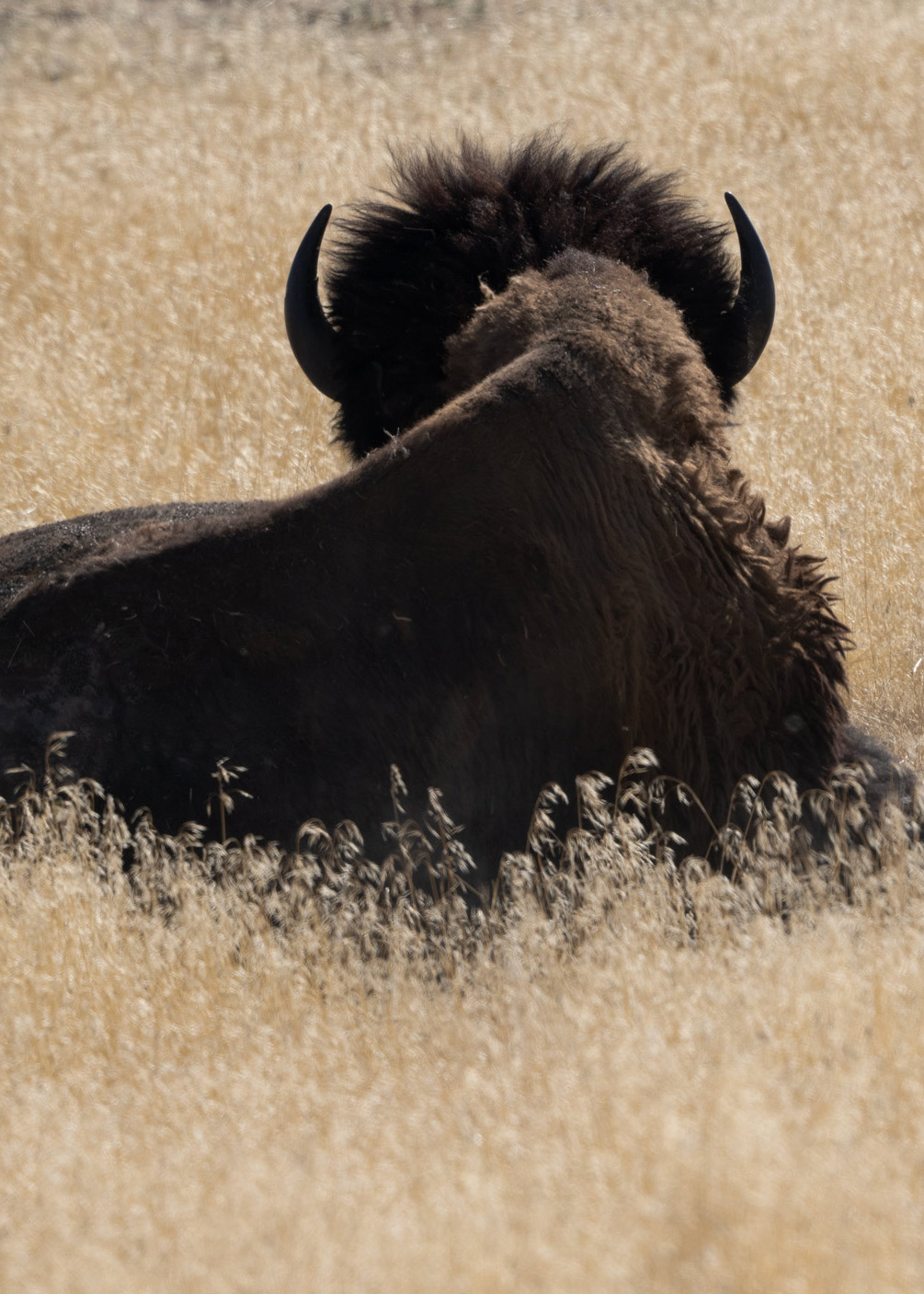
Lisa Lee Herrick is a second-generation Hmong American writer, artist, and media specialist who helped produce the film, The Hmong and The Secret War, now available at PBS.org. She is a former television executive and award-nominated news journalist, and a founding member of the LitHop literary festival. Her essays and illustrations have been featured on or are forthcoming from The Rumpus, Food52, The Normal School, and others. She is writing a family memoir about the inheritance and aftermath of trauma, a cookbook, and two graphic novels.
Hokyoung Kim is an illustrator from South Korea. She studied painting at Hongik University, and received her BFA in illustration from the Ringling College of Art and Design. Her clients include The New York Times, The New Yorker, The Atlantic, and others. She currently lives in New York City.
In the wake of COVID-19, Lisa Lee Herrick challenges the resurgence of dangerous historical frames of race and belonging.
He who fights with monsters should be careful lest he thereby become a monster. And if thou gaze long into an abyss, the abyss will also gaze into thee.
—Friedrich Nietzsche, Beyond Good and Evil (Part IV, Aphorism 146)
For the first time, we stayed home during the Lunar New Year. It felt strange not to be at our favorite restaurant on Grant Avenue in San Francisco’s red lantern–lined Chinatown, clinking our porcelain teacups and biting into ingot-shaped, juicy pork-and-cabbage pot stickers dipped in white vinegar for good money fortune. This year we did not pull the long-life noodles from the family plate for good health or spoon flaky fillets of milk-white steamed fish with ginger and sesame oil to symbolize the forthcoming abundance in the New Year. On January 19, just the week before, a thirty-five-year-old man returned to Washington State after visiting family in Wuhan, China, and officially became the first US recorded case of infection by the novel coronavirus, which causes COVID-19. Thousands of travelers from around the world were already en route to descend upon downtown San Francisco for the annual Chinese New Year Parade and street festivals, and out of an abundance of caution, we canceled our annual tradition—our first family meal—and forwent all the good-luck talismans used for properly welcoming the Year of the Rat.
Instead of loading up the car with my husband and daughter, I called my parents and told them about the global situation—the emerging pandemic. As refugees from Laos, they know transnational conflict firsthand: They still remember the way the rations dwindled in Ban Vinai until each family received only one cup of rice between them. They still remember how hunger gnawed at their minds, how it invaded their dreams and seeded despair that later fruited into madness. They remember how tuberculosis ravaged the camps, how bloody sputum was crusted on soiled sheets inside the medic tents, where you witnessed more death all around you than you could bear. They calmly absorbed my rising panic and waited for me to catch my breath.
“Do you have enough rice?” my parents interrupted. Yes.
“Do you need more food? Come over and pick some up,” they said. I can’t come over.
“Don’t be silly. We’ll come by and drop it off for you, then,” they said. No, you must stay home. It’s too risky.
“This is nothing compared to what we went through,” they said. “You still have clean water and toilets.”
I know I have nothing to really complain about, only the fear of dying suddenly—unexpectedly—like everyone else.
“Have you talked to your siblings?” they asked.
My siblings: I worry for them the most, because they are the medical frontline workers who are desperately needed to intervene in the emergency wards.
My brother is a Stanford School of Medicine–educated anesthesiologist who, as a young boy, enjoyed solving puzzles: he took apart all the appliances in my parents’ house, then put them together again, and he doodled undulating human figures with interlocking loops and spirals. For my brother, the body is a puzzle—a soft clockwork squeezing with morphological precision—and he is the engineer who fine-tunes its frayed edges to make a person whole again. This was his response to the Asiana Airlines Flight 214 crash at SFO on July 6, 2013: he gathered the shredded passengers, bones splintered into jagged sharks’ teeth, and cooled their charred flesh; he felt life quivering in his hands like a captured bird. At his graduation from medical school the following year, he told me that his mind had split that day at the crash site—resolve divorcing despair—the only way to quickly move on without collapsing.
My sister is a hospice nurse who eases the passing of the terminally ill—the hopeless, the waiting, the quick, the inevitable. Throughout our childhood her heart was always exposed, warm-beating, a beacon that welcomed strays: the animals would sneak through the back gate like thieves, paw the front door and jump the fences, their padded feet drumming the roof each night. They only ever wanted her: she brushed the burrs and knots from their matted fur, shared their fleas, and they became tame in her care. That is who she is: she is a pain eater, a person who makes the fearful world softer because she touches the wound.
I cry myself to sleep some nights now, wondering when I will see them again in the same room, and if the last time we ate together was the final time. My sister-in-law told me that she and my brother have already discussed what they will do, as a young family of three, when he gets infected at work. Not if, but when. My sister texted me that her clinic has been prepared for weeks, and she assures me that they have enough personal protective equipment (PPE). But I lay awake in bed, past the witching hour, imagining constellations on my popcorn ceiling forming the outlines of their faces. Yet, off duty, my siblings will be reviled and resented because they are Asian. I remember holding them in my arms when they were newly born and falling in love—marveling at those tiny hands that would perform miracles someday. I cannot stand the idea that someone might point their finger and seethe, “You did this to us.” That someone would attack them while they were out buying a dozen eggs, walking to their car, or simply standing on the sidewalk. And what would I do to the person who dared hurt them?
I lay here in the dark, waiting for my eyes to adjust to the shadows, inside a storm of even blacker thoughts.
Days before California governor Gavin Newsom mandated the statewide stay-at-home order on March 19, 2020, which effectively paused all nonessential economic activity and travel for nearly forty million residents, a Facebook post from a publishing acquaintance popped up in my news feed. His collage of photos and videos were taken, he claimed, during a past trip to China years ago, and they caught my eye because they featured an array of skewers arranged in neat, vertical piles—including grubs and scorpions—heaping piles of brown foods garnished with chopped scallions, and a balding, middle-aged Chinese man, lips pursed, clearly enjoying his meal. Above it, my acquaintance wrote: A few photos/videos from a “live animal market.” Any questions? I held my breath, watching the flurry of gray ellipses begin to dance in the comments.
Maybe someone will point out the obvious error: these are photos and videos from a street-food marketplace, where food is cooked to order, and not a “wet market” at all—where live animals are butchered or trafficked to meet global demands for exotic wildlife trade, and where the first outbreak in Wuhan may have begun.
Instead a woman wrote, “The devil exists, it’s human.”
The condemnations that followed were a frenzy of vomit emojis and a confession: one animal rights lawyer had sought to forcibly close a San Francisco Chinatown meat market on the basis of personal principles and not, as claimed, for the sake of public health per se. Others pointed out the contradiction of not protesting the live meat vendors that were still operating at farmers’ markets in the East Bay. One man wrote, “I don’t even know what this is. Worms? Eels? Octopus tentacles?” My Facebook friend, who had once won an award for his plant-based–lifestyle advocacy and cofounded a popular vegetarian magazine, wrote: “Worms, Jeff.” I was appalled and felt betrayed: it was clearly a plate of cooked tripe, julienned into ribbons.
He had cherry-picked the most unfamiliar dishes from the street-food market—skipping the alleys where woks of fried noodles with black bean and sesame paste, vats of freshly boiled soy milk, and delicacies refined by generations of ascetic Buddhist monks tantalized vegetarian and vegan palates. Worse, he presented photos for shock value, and to stoke disgust, while declaring a lie: that Chinese people eat live worms. It was a move straight out of the dog-whistle playbook, a subtly coded message designed to spark irrational fear while maintaining the veneer of plausible deniability.
My jaw clenched, and I felt waves of blood surging in my ears like a tsunami of white noise. My fingers hovered over my keyboard, trembling slightly with rage. Do I really want to jump into this conversation—again? I couldn’t help but notice that the commenters were mostly white, all smiling self-assuredly from their pinpoint profile photos, while caressing chickens or embracing lettuces, and they gleefully lobbed ad hominem attacks against the anonymous vendors and customers whose daily lives had been intrusively exposed for thinly veiled acts of racialized aggression in the name of vegetarianism and animal-rights advocacy.
No one said “coronavirus.” They didn’t have to.
Racism fouls the mouth, makes waters bitter, and poisons our connections to one another.
Food is a common access point to deeper conversations about the lived experiences that unite us, as well as those that divide us. Cuisines and cultural food pathways emerge as culinary histories of how people have survived against hunger and famine, against displacement, loss of country, and despair. How we eat—and what we eat—are clues to the evolutionary DNA of our cultures. It is literally a matter of taste—but racism fouls the mouth, makes waters bitter, and poisons our connections to one another no matter the era.
Why do we nitpick Chinese food pathways and demonize Asians in general for participating as major suppliers and consumers in the global demand for cheap and affordable food products, yet we seem inoculated with the inability to overtly criticize or racialize—in the same manner—the heavily regulated food chains designed to supply a near-endless volume of meat and produce in the United States and in Europe? China is one of the largest export markets for US-raised meat, dairy, eggs, nuts, grains, soybeans, animal skins, and agricultural feed: Chinese consumers and industries account for over 17 percent of US total agricultural exports, valued at $24 billion a year. Our tastes for exports are not mutual: the majority of Chinese exports are nonperishable goods (like teas and spices) and consumer goods (like machines, furniture, and toys) because of our obsession with steep deals and discount shopping—and Chinese-made goods are cheaper and easily replenished, the labor behind the industries that make them conveniently invisible and low cost.
This lateral slide—that China produces cheap products, and therefore, Chinese lives are expendable—has contributed to troubling patterns throughout recent history: when major global crises arise, whether military or economic or pandemic, it’s easier to make the Chinese (and other people of Asian descent) the villains than to investigate the complicit relationships that spread pandemonium around the world.
When the H1N1 virus—what became known as the “Spanish flu” (and later the “swine flu”)—first emerged in Kansas in 1918, North Americans (including Canadians) blamed Chinese laborers for spreading the disease throughout Europe. The laborers were needed because World War I’s Western Front demanded easily replenished caretakers for the troops. Genetic evidence for those claims is still inconclusive and anecdotal, at best, but the origins of the 1918 influenza pandemic have already been forgotten by many. While China responded to the United Kingdom’s and France’s outbreaks of mad cow disease by banning meat exports from those countries until 2018, there was no global leap to vilify Europeans for selling beef that could cause neurodegenerative bovine spongiform encephalopathy. No person of detectable English or French descent, or accent, was struck down in the streets or yelled at and spat on or stabbed in public. Yet as COVID-19 began devastating northern Italy, Chinese laborers were blamed again: The chairman of the Riley County Commissioners, Marvin Rodriguez, told the Kansas City Star that Chinese garment workers were to blame for Italy’s outbreak, and he pushed the conspiracy theory that the novel coronavirus was deliberately exported by the Chinese government to instigate a pandemic. Texas senator John Cornyn told the media that “China [was] to blame because … people eat bats and snakes and dogs and things like that.”
In the US, no one cared much that thousands of Chinese—let alone South Koreans, Vietnamese, and others—were overflowing hospitals across the ocean. It was only when an outbreak ravaged a posh, Alpine city in northern Italy that the troubling thought emerged: If it could happen there, it can happen here, too, because they look like us.
As of this writing, the Centers for Disease Control and Prevention theorizes that the novel coronavirus may have first been transmitted to a human being at a “wet market” in Wuhan. The virus can be spread from human to human; currently there is no evidence that it can be transferred through food consumption. The Scripps Research Translational Institute has already debunked conspiracy theories alleging that the novel coronavirus was artificially engineered in a laboratory as a biological weapon. None of these scientific findings, however, have deterred that other viral pandemic: anti-Asian racism.
I’ll never forget the first time someone asked me if I had a dog and if I planned to eat it. It was such a disorienting and confusing question that I didn’t realize its overt racism until many years later in college, after I enrolled in my first Asian American–studies course and learned about the history of anti-Asian violence and federal legislation intended to keep US-born Asians designated as permanently deportable foreign aliens. I was still too young to know that Chinese people had been lynched in America, too, or about the massacres. No one told our family that the Japanese Americans in our city had been rounded up in 1942, after the attack on Pearl Harbor, and forced to sleep in makeshift shacks located just a quarter mile from our house. An open field stands there now—gone fallow with deer grass, Pacific fescue, and creeping wild rye reaching toward the sky. My parents arrived in America at the end of disco and the beginning of Reaganomics, utterly ignorant of the Asian American political movements that preceded our arrival. The struggle to be considered human, too. When the children at school asked us if we had “itchy knees” or if we used our own shit to fertilize our crops, we dismissed them. It seemed unfathomable that malice was so easy in such a civilized and modern society.
When the recession hit my parents’ business, we downsized, and my mother worked part-time as a sushi waitress across town. She often got the night shift, and returned after midnight still wearing her stained black cotton apron, with a bagful of burrito-sized sushi rolls made by the chef just for her, because he knew she had five hungry children and a husband at home to feed every night. The tips were meager, but the owners were generous, loading up her purse with exotic foods we had only ever seen on TV shows—the kind where rich but woefully single white people found love at fancy restaurants under the amber glow of expensive chandeliers. My first taste of sashimi was a sensual awakening for my tongue, like a French kiss, a trespass into another body. We tried the tsukemono, the citrus-colored tobiko, and crackled glossy, green-black nori–wrapped sushi rice between our fingers. How wasabi felt cold, yet hot, was a revelation. It surprised us to learn that the restaurant owners were actually Chinese American.
Some customers took offense when they, too, learned this fact: once, my father drove us all to pick up my mother after a twelve-hour shift, and we sat in the minivan, watching through the sushi restaurant’s picture window, as she served two young white customers with her most ingratiating smile. They made her refill their glasses, change their silverware, dump their plates of food, and fetch replacement orders from the kitchen. We watched my mother kowtow, and when she turned away, they snickered and laughed at her. As the restaurant lights dimmed near 10:00 p.m., we watched my mother hand them their bill, and they pointed at her and shook their heads. My mother’s brow pinched, and her hands worried the corners of her black apron. The couple stood up, and my mother backed away. I watched this pantomime from behind the windshield of our minivan, and I felt the roots of an unnameable urge snake through my body, threading into my brain. I wanted to leap out of the car and sink my fist into their mocking smiles, but I was too mesmerized to move. I held my breath until my mother finally walked out the restaurant doors, the couple leaving closely behind her, and she hurried into the back seat of the minivan without a word.
The couple ambled slowly toward the white, beat-up pickup truck parked two stalls from us on the left. I can still remember the orange rust outlining the facets of a crumpled door where another car—or possibly a large animal—had smashed into it. But before my mother could even slide our door shut or my father start the engine, they rapped their knuckles on our windows. They pressed their pustule faces against the glass, then raised their middle fingers to their eyelids—pulling the edges slant toward their ears until they became paper cuts—and screamed, “Fuck you, you fucking ching-chong chinks!” My stomach clenched against my spine, and my heart pounded. I leaned forward, gripped the edge of the sliding door, and thrust my foot forward, but my mother grabbed my shoulder and pulled me back inside.
“You’re going to let them get away with that?!” I demanded.
She told me to ignore them. Let it go. That it was good they were leaving. It didn’t matter what they did, as long as they were leaving.
I watched them swagger to their truck and jump inside. As they swerved out of the parking lot, they both air-pumped their middle fingers at us again before peeling out toward the exit.
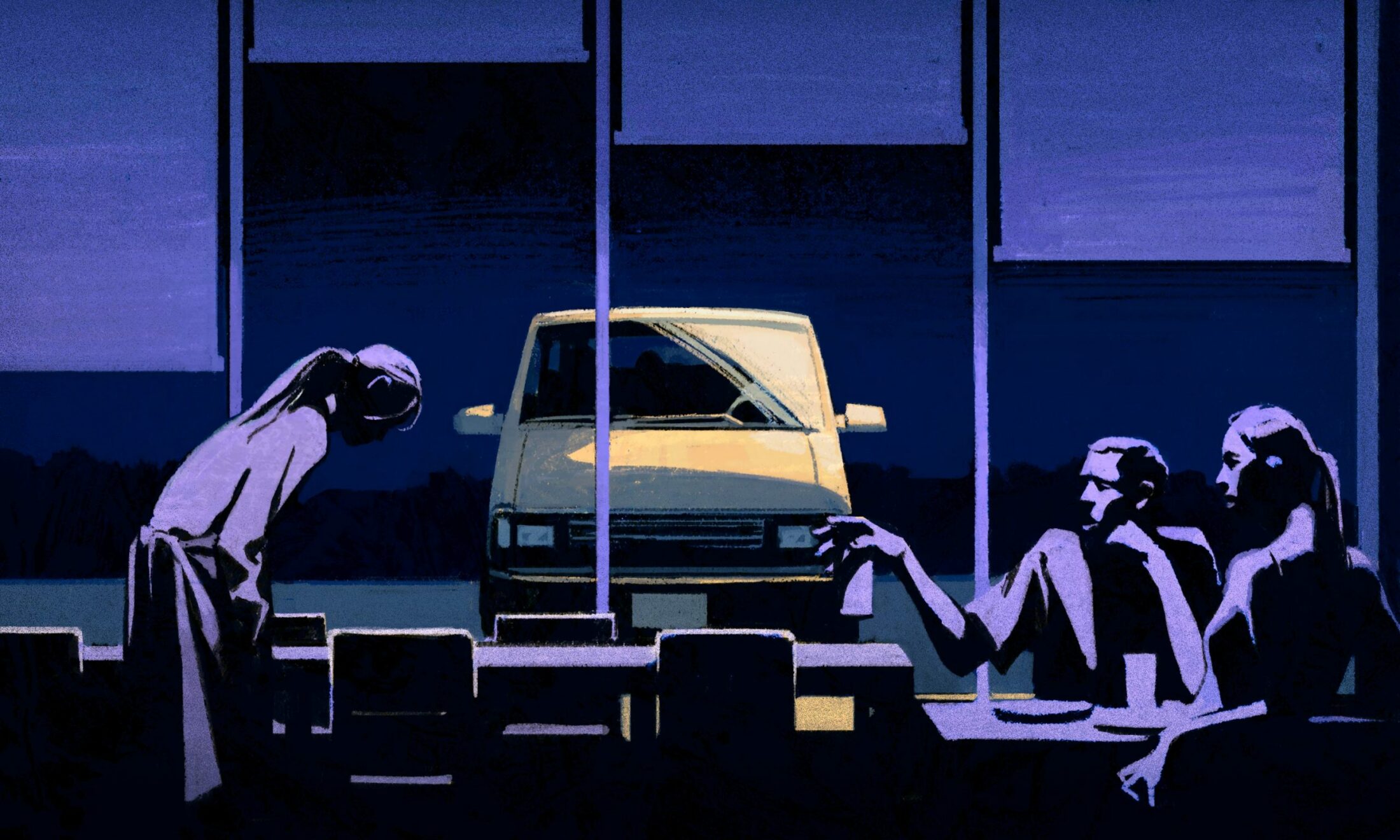
At home, my mother’s face winced with pain as my father massaged her stiff neck and shoulders with Tiger Balm. She told him how they had complained that the restaurant was “not a real sushi place, since the owners were Chinese.” They had refused to pay. Then they simply didn’t tip my mother. They treated her like a slave just for fun. My father furrowed his brow, squeezing her body as though to wring out the poisonous words. She glanced up at me and asked me never to do what I had been about to do ever again.
I went to bed, dreaming of all the vicious ways I would mete out justice one day—if only there were a way to find out who they were and where they lived. I dreamt of vengeance, and I felt the violence grip my entire body like a fist. It felt like the handle of a bat or a knife in my hand. Like a bomb, and my heart was the ticking. I lay in bed, listening to my parents whispering prayers down the hall. It was a prayer asking God to help them find the will to forgive and move on. I prayed, too, to move on: to leave this place and never return.
But some things are simply inescapable.
Even after I moved into a university co-op, where I was the only person of color in a two-story house filled with barefoot East Coast hippies and dog-eared copies of the Bhagavad Gita, I stiffened when my housemate Chris laughed at me late one night in the kitchen: I had noticed him eyeing me for weeks as he restocked the kitchen cupboard with tea tins from his barista job at Peet’s Coffee, always peeking at me, then smirking while I boiled water in a kettle on the gas range.
“Why do you do that?” he asked finally. “Boil water and then just drink it like that?”
I explained to him that it was a common health practice for many cultures in East and Southeast Asia: it’s simply good protocol to boil water in case there are any gut-dissolving bacteria and amoebas, and drinking hot water is good for digestion. It keeps the stomach muscles relaxed and ready to digest food; cold water causes muscle contractions and cramping. Plus, sipping something warm felt soothing on chilly nights.
“It’s weird,” he smirked.
I was remembering how insufferably long-winded his lectures on the merits of different teas were during every house dinner—how he fancied himself a “tea master,” in his own words. And yet, this: if he had truly understood tea culture in Asia beyond conspicuous consumption, then he would have understood how his casual insult was an accurate reflection of his solipsism—inward and navel-oriented—but it was already late and I was tired from studying for exams, tired of confronting these daily acts of racialized hostility, these microaggressions, that now made me feel unwelcome even in my own house. I walked past him to my bedroom and shut the door.
William A. Smith, a professor at the University of Utah, coined the term “racial battle fatigue” to describe this state of chronic stress. I call it “this bullshit again.”
I am just as vulnerable, powerful, worried, protective, optimistic, and concerned as we all are in this global pandemic.
Right now we are in week 6 of self-quarantine at home: we take our basal temperatures daily, and none of us have shown any symptoms of illness. Like many Americans, we simply have to assume that we have it, because testing kits are limited and currently reserved for people with severe symptoms. I sit at home and refresh the daily tally of confirmed COVID-19 cases in our county nearly every hour: it is doubling each 24-hour cycle. I’m thankful that the schools are now closed through the end of the academic year: I feared what would happen to my child on the playgrounds, in the classrooms, and in the school hallways if I wasn’t there to intervene. You see, when your face resembles the perennial “other,” the untrustworthy foreigner or intruder, whatever polite civilities you gain in the community at large are merely provisional. As soon as conflict arises, people seek shortcuts; they look for an easy scapegoat to beat, to unleash their violence and frustrations. Staying home has felt safer than being outside.
The random attacks on people of Asian descent are escalating in both severity and frequency. In mid-February, a sixteen-year-old boy in Southern California was attacked so viciously that he needed MRIs to test for concussion and other injuries. A Thai American woman in Los Angeles recorded a racist rant from a fellow subway passenger blaming Chinese as vectors of disease. In March an Asian American man was insulted and sprayed with Febreze while riding the train in New York City. Also in New York City, a father and his ten-year-old son were shoved while walking to a bus stop, and a Korean woman was punched in the face while standing on the sidewalk; both attackers demanded to know why they weren’t wearing face masks. A student from Singapore was beaten to a pulp on the street in London and may need surgery to fix a broken bone near his right eye. A man followed an Asian American woman in San Francisco, yelled at her, then spat on her. A Filipino American registered nurse in San Francisco, having just delivered medicine to a family, was unlocking his bike when an older white man called him a “gook” and then spat in his direction. A Burmese American man and his son were slashed in the face by a knife-wielding man while shopping at a store in Texas.
Four teenage girls attacked a fifty-one-year-old woman on the bus in the Bronx with an umbrella; the woman required stitches on her head. On April 5, a man ambushed an Asian American woman in Brooklyn while she took out her trash, pouring what the police believed to be acid down her face and body, and she was hospitalized with second-degree burns. Here in our city, someone spray-painted “Fuck Asions and Coronyvirus” on an elderly South Asian American man’s car: the family discovered the vandalism as they were getting ready to send their kids to school. Over 650 acts of anti–Asian American violence were reported, nationwide, between March 18 and 25, 2020. The Stop AAPI Hate Reporting Center revealed during an April 2 virtual town hall that this number had since doubled. My husband now wears a face mask made from an old T-shirt and two rubber bands when he leaves the house and is vigilant about anyone standing too near or following too close. We know cloth masks won’t prevent infection. Here in our city, people stare at us as if we are dangerous wild animals rife with disease.
I know that look; I’ve seen it all my life, directed at me and my siblings, my parents, my grandparents, all of us. I have played referee and peace officer, translator, and mediator. I am exhausted from talking in circles; exhausted from having to be the one who must inform and educate but never accuse; exhausted from being the one who must remain sensible and calm while a finger, a weapon, is pointed in my face. I am exhausted from being seen as the one who does not belong, even though I was born and raised here. Former US presidential hopeful Andrew Yang conjectured that perhaps Asian Americans could avoid being targeted by “[being] more American”—but history proves otherwise: it’s not “fitting in” that’s the problem; it’s racism posturing as the status quo. Racism is the metastasized fear that cannibalizes communities.
My heart breaks for the ones who have swallowed that hatred, the ones who are spiritually broken; the ones who have accepted that the only way they can thrive is by erasing something essential from themselves; the ones who choose to disappear because they have been told that they were born shameful. The kind of actor who feels relieved when someone remarks, “Funny, I don’t think of you as being Asian.” I’m so tired of wearing that yellow mantle. It looks terrible on everyone. I am nobody’s peril. I am just as vulnerable, powerful, worried, protective, optimistic, and concerned as we all are in this global pandemic. And I no longer have any patience left to simply ignore racism when it happens.
My mother made me promise her, decades ago, to simply turn a blind eye—for her sake. For a long time, I acquiesced to this so that she would not worry about me. But now I am a mother too, and I must revise the rules of engagement for my own future.
Two years ago, as we walked down Stockton Street on a sunny Saturday afternoon during a family trip to San Francisco, my daughter—who was not quite a teenager then—watched two young white men amble by us on the crowded sidewalk as shoppers swarmed over crates of choys, cabbages, turnips, and broccoli. I remember they were tall and thin, with a Victorian pallor that glowed like moonlight. One man wore salmon-pink shorts, and he had a smattering of nut-brown freckles with a mop of strawberry-blond curls that bounced with each step. His friend was slightly shorter, and his cropped black hair perched stiffly on his chelonian head. Both wore boat shoes with no socks. And I only remember these details because I stared at them as the strawberry blond imitated a military march—his arms swinging violently up and down like a pendulum as he shouted, “Ching-chong! Ching-chong! Ching-chong!”—and his dark-haired friend snickered. I recognized the slow wave of horror, confusion, and rage that washed over my daughter’s face, and my stomach clenched.
“Hey!” I called out to the young man mock-saluting the crowd. “What’s wrong with you?”
His dark-haired friend startled, and he looked back at me with wide eyes like a boy caught stealing. The strawberry blond refused to turn around, and he walked faster, his naked heels squeaking in his boat shoes. I matched his pace.
“Hey, I’m talking to you!” I shouted. “You can’t say that. Not here, not anywhere.”
The strawberry blond spun around, his mouth twisted in an ugly sneer. “It’s fine!” he snarled. “We’re on our way to get wonton soup anyway!”
“What does that have to do with anything?” My voice cracked. “That’s racist, and you know it. You’re just a racist.” People began to stare. He broke into a run and crossed a red light, his friend trotting behind him, looking back the whole way.
“Go ahead and run, you racists!” I yelled after him.
We watched them nearly sprint into the Stockton Street Tunnel and disappear into the shadows. When I turned to my daughter, she was laughing. “Wow, that was amazing,” she said. An elderly Chinese American man leaning against a wall gave me the thumbs-up and nodded his head. The light turned green, and we crossed the street. Behind us, the Saturday-morning shopping continued. My heart was still drumming against my chest, but it felt good to finally confront the monster and call it by its name.
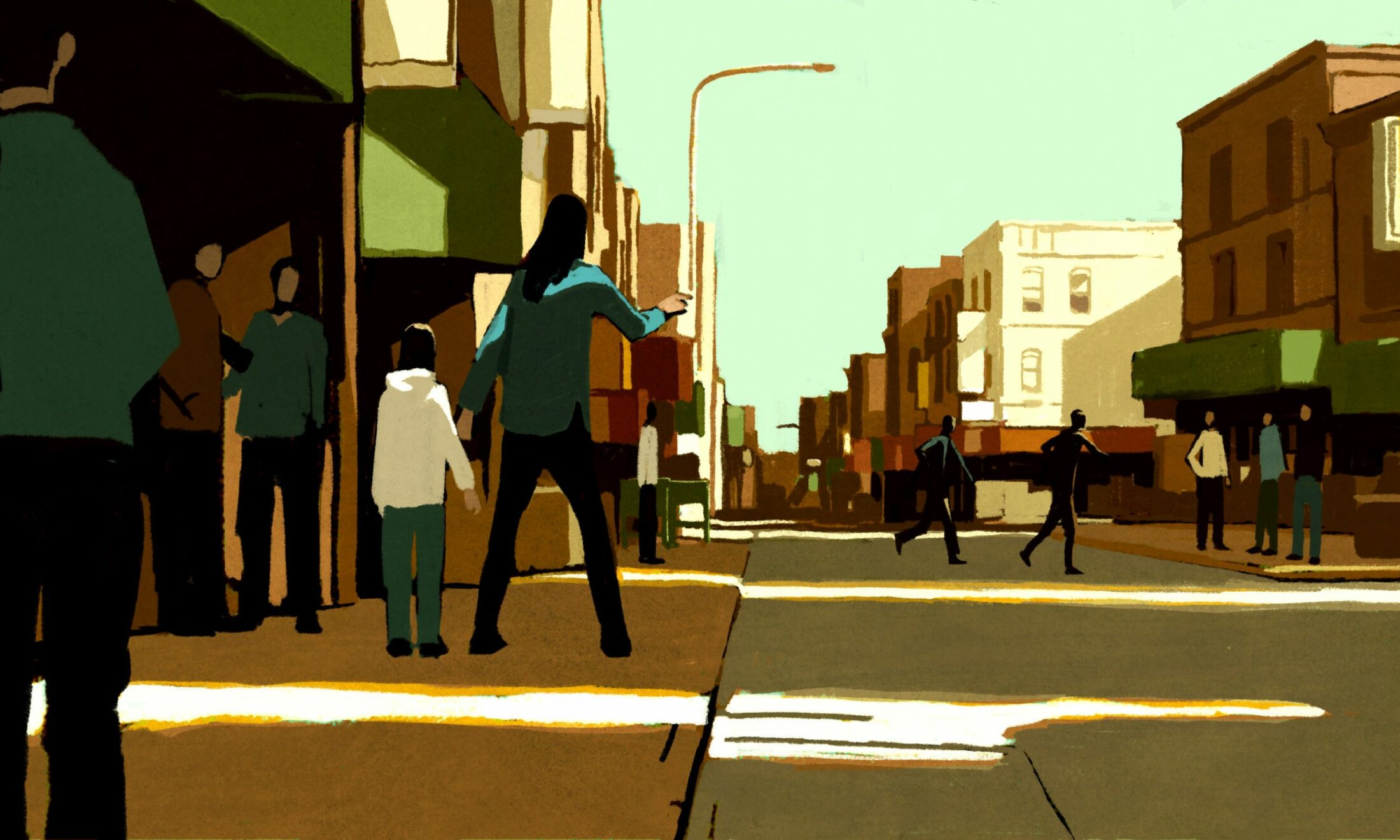
Later, we trekked through Golden Gate Park and exited off Ninth Avenue into the bustling Inner Sunset. My daughter asked if we could go shopping for school clothes. I agreed, and we ducked into the first clothing boutique we saw: it was named after the eighth level of consciousness in Indian Buddhism—a karmic place where memories and spiritual energy are purified into wisdom, guiding personal awakening. As we walked into the shop, the woman folding shirts in the middle of the store looked up expectantly, but then her smile fell, and she quickly dropped her head. We were the only two customers inside the shop, but after that afternoon’s showdown in Chinatown, I wasn’t in the mood for another confrontation. I said nothing and watched my daughter browse the filmy dresses hanging on the racks along the walls.
She was a heavy-set white woman, middle-aged, and she wore her hair—dyed “millennial pink,” a dullish mauve like smoky rose quartz—in a loose shag that hung like a heavy curtain around her face. Her arms snapped frantically as she folded shirts, and the zippers of her sleeves chattered like teeth against her black leather jacket. I could see her eyes roving, staring at us with an indiscernible look that vacillated between anger, disgust, impatience, and panic. Was she afraid of us—a woman and a child shopping in her store? Her thin lips pressed together tightly, like a paper cut. The silence crackled like static electricity between us.
“This is cute,” my daughter said, pointing to a necklace with a chevron pattern near the cash register.
I walked over to her. Behind us, heels clicked onto the wooden floor from the street: a young woman with white-blonde hair walked into the store with a smile and greeted us. The pink-haired woman who had been frantically folding shirts immediately ushered this employee to the cash register, disappeared behind a curtain to the back room, then reemerged with a large black hobo purse and proceeded to march out the store, head down. Still snubbing us. The shop girl asked her a question. I felt the heel of her boot stamp the floor, and she sighed with exasperation. When she spun around, I saw her face and immediately recognized her—those eyes: green, closely set and crocodilian, the color of swamp water. The last time I had seen them was ten years ago: She had marched up to me, that night, at a friend’s party and slapped me in the face, somehow guessing correctly that I wouldn’t strike her back. I had never met her before. I had never known her name, or understood why she did that, but those eyes—I remembered those eyes, watery and drowned, as she leaned back to admire my shocked face. Her eyes were haughty then, taunting, as she loomed over me in her golden high heels, with a crooked smirk carved between her ruddy cheeks. I motioned to my daughter that it was time to leave.
Later that night, in our hotel room, I googled the store. This was the voyeuristic thrill that I had wished was possible when those two people terrorized my family outside the sushi restaurant. I had wanted to know so badly what kind of horrible person would treat people this way—and now I had the tools to find out in less than a second. My heart raced: I couldn’t believe how easy it was to find my attacker’s identity, ten years later, while bathed in the blue-green glow of my mobile phone. My fingers trembled as I read and scrolled. My hands flexed in sweating, alternating fists. What am I going to do now that I’ve found her?
I found her social media profile: here was a photo of her at Burning Man wearing a Native American feather headdress, a cartoon illustration of a blonde woman with pink-streaked hair riding a fuchsia Chinese dragon cribbed from an artist’s online portfolio, a pastiche of goat-headed gods with glowing pentagrams, and juvenile poetry about butterflies and glitter and feeling one with the world. She rallied against the Dakota Access Pipeline and petitioned for more free hugs. She signed her public posts with hearts and “I love you all!” She wore silly purple spandex jumpsuits with outrageous holographic sunglasses and looked … not at all like the ogre that I was expecting to find.
Did something happen? She doesn’t seem so awful—just insecure, flawed, misguided. A person still in progress. She was a stranger to me then, and she remains a stranger to me now.
I turned off my mobile phone and let night swallow the hotel room again. I sat by the window facing Telegraph Hill and watched the glittering lights of barges pull into the bay, and I thought about how deep-sea creatures living at the bottom of the ocean, where sunlight cannot penetrate, must generate their own light to see one another in the endless void. How some creatures living in total darkness and isolation lose their eyes completely and never know anything but shadows. I didn’t want to become that creature: blinded.
It wasn’t right to define myself by the worst things that ever happened to me, and it didn’t feel fair to condemn someone else by their weakest moment. Perhaps that vengeance I had ached for all those years—that age-old desire to tip the scales in the name of justice—was just unexpurgated anger. Revenge is a bottomless cup that leaves you thirsty. It troubles me that some Chinese businesses and local officials are now trying to blame African immigrants for the coronavirus in Guangzhou; it is the same monster but inflicted upon other brown and black bodies. This will not do. I need a different approach, like those my sibling uses to save lives—not doing battle but intervening and healing: stopping the unseen bleeding before it poisons; saving a life by drawing out the toxin; healing, not battling.
But who takes that ever-hesitant first step toward mutual understanding? Is it weak to be kind first—to forgive first? And why can’t it be someone else for once?
It’s true: I am tired of dealing with a lifetime of verbal, emotional, and physical abuses because of who I am, but I am battle-worn, not browbeaten. As my body ages, my spirit feels more vast. I understand, now, that it’s not my responsibility to respond to the person who attacks me. But if I can prevent an attack from happening in the first place, if I can intervene before the violence begins—before the pain, the sadness, and the resentment leach all benevolence from hope—then I will do that: I will intervene. I will intervene, and resist becoming a monster in the process.
My fingers no longer tremble over my keyboard, unsure of what to say.
Any questions?
No questions—but a clarification.
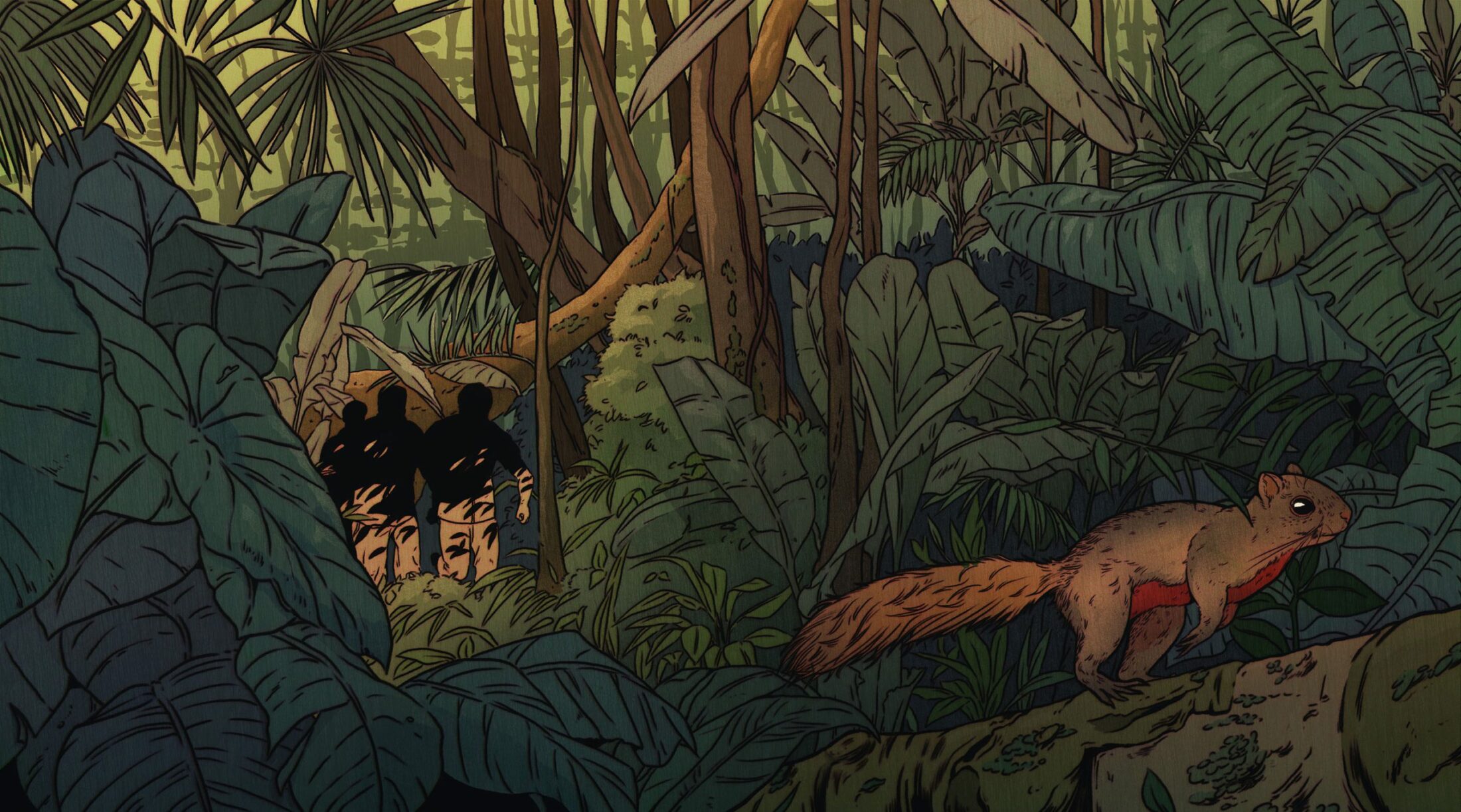
We Learned to Fear Tiger and to Love Squirrel
In the storied universe of Hmong cosmology, Squirrel is revered for its ability to outsmart the hunter. In this essay, Lisa Lee Herrick recalls her grandfather—a master squirrel hunter—bringing home a squirrel for spicy hunter’s stew, and how this dish helped unravel a hidden past.
